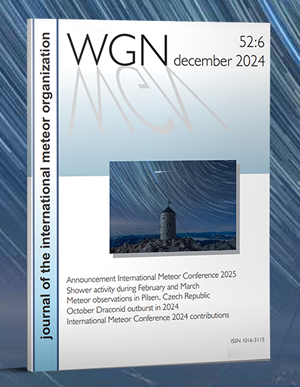
Although the major northern hemisphere Perseids are badly affected by the last quarter Moon near their best this year, there is the possibility they may produce somewhat increased rates. The usual maximum is due around August 12, 17h30m-20h00m UT, but Esko Lyytinen suggests we may encounter the 1610 Perseid trail earlier on August 12, around 9h00m UT (λo = 139° 661). This could produce activity additional to the normal Perseid ZHRs then of a few tens, maybe up to a hundred. Mikhail Maslov confirmed this but for 8h00m UT and with only 10-15 meteors per hour. Both reseachers further suggest that rates overall could be enhanced above usual by the proximity of the annual stream’s core.
The 19th century trail should pass roughly 0.003 astronomical units inside the Earth’s orbit at λo = 139° 499, so around 5h UT on August 12, though it may add less than 10 (according to Lyytinen) or up to nearly 100 (according to Maslov) to the ZHR at that point. Naturally, information to verify what takes place will be very valuable despite the Moon, so visual observers are encouraged to try to follow as much of what happens over the possible Perseid maxima as practical.
Visual observations can be reported through the Report Form and are highly appreciated. The observations are automatically included in an automated ZHR graph.




 You saw something bright and fast? Like a huge shooting star? Report it: it may be a fireball.
You saw something bright and fast? Like a huge shooting star? Report it: it may be a fireball.  You counted meteors last night? Share your results with us!
You counted meteors last night? Share your results with us!  You took a photo of a meteor or fireball? You have a screenshot of your cam? Share it with us!
You took a photo of a meteor or fireball? You have a screenshot of your cam? Share it with us!  You caught a meteor or fireball on video? Share your video with us!
You caught a meteor or fireball on video? Share your video with us!